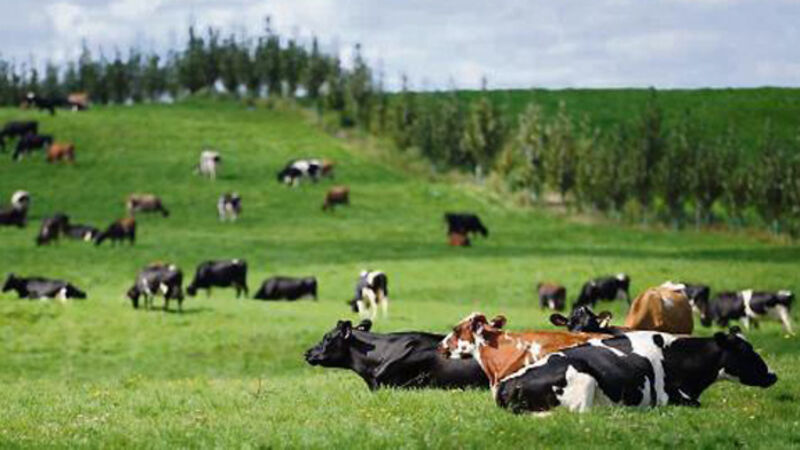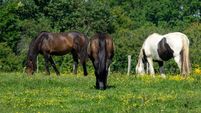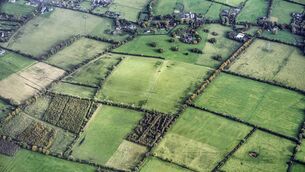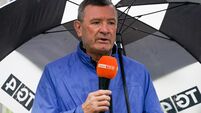Beware of the Kiwi trap of 1m unprofitable cows

He said Kiwi dairy farmers added a million cows to their national herd in the last 10 years, but are no better off .
“The creep towards more ‘grass-poor’ systems of production is noticeable everywhere.”
As Irish dairy farmers and potential new entrants gear up to a life without the milk quota, he has looked at Irish farms, and found that, as in New Zealand, Irish dairy farms that use more purchased feeds have lower home grown forage utilisation, a shortened grazing season length, and reduced farm profitability per cow, per litre and per hectare.
What can we learn from our own data, from grass-rich and grass-poor systems of milk production, about how cows perform and how the finances stack up?
I reviewed Teagasc’s Profit Monitor database for over 1,500 dairy farms over the 2008 to 2011 period.
These years were chosen to reflect both the variation in milk prices and weather conditions which we can expect on average over the next five years.
As the percentage of bought-in feed increased, the consumption of grass dry matter declined, because the increase in overall and milking platform stocking rate was not great enough to make up the difference. The response observed was the equivalent of 0.67 litres of milk per additional kg of feed eaten.
Assuming milk and meal prices of 30c/litre and 30c/kg respectively, this suggests a return of 20c worth of milk for 30c worth of meal.
The response to supplements is low, indicating that cows were already on a high plane of nutrition.
When the extra feed was introduced, it was eaten instead of grass.
Higher output did not increase net profit on either a per litre or per hectare basis. Reducing the grass content of the diet increased total costs per litre.
Variable costs, particularly the feed costs, jumped, while fixed costs remained static.
On either a per cow or a per hectare basis, both variable and fixed costs increased.
This increase was greater than the increase in gross output, and so the net margin (the margin remaining to pay the farmer, bank principal and taxation) was €200/ha lower in the grass-poor system, compared with the grass-rich systems of milk production.
It seemed surprising that a milk yield response of 0.67 litres/kg of additional purchased feed was not profitable, when the four years of the study are taken into consideration.
But spending on the grass-poor farms doesn’t stop at just meal and forage purchase.
For every €100 spent on feed (meals and forage), an average of an additional €60 was spent on other costs, on the grass-poor farms.
This study does not suggest that farmers in less grass-rich systems of milk production can’t make a reasonable profit margin.
There was as much variation in net margin per hectare within systems as there was between systems.
However, the proportion of farmers generating a net margin of greater than €2,000 per hectare was twice as great in the grass-rich systems of milk production, as it was for the grass-poor operators.
How can I increase the proportion of grazed grass in the diet of my dairy herd without incurring extra costs in the process?
Steps that farmers can take to achieve this include the following.
Ensure that the soil lime status and P and K index are optimised. If you don’t know, take soil tests now and act on the results.
Walk the farm regularly, and measure the amount of grass that you grow, to identify poorer paddocks for improvement.
Ensure the ‘milking platform’ is fully reseeded and accessible by the cows. There is no place for growing forage crops such as maize silage or whole crop on the platform, at platform stocking rates of over two cows per milking platform hectare — and no need at lower stocking rates.
Many out-farms are performing poorly. Improving their potential to grow grass for replacement heifers and to provide grass silage for the winter requirements of the dairy herd will be a lot more profitable than purchasing more feed or forage to feed the cows.
Legions of people are looking forward to quota removal, as an opportunity to improve their lot.
Many of them are not farmers, but make their living off farmers.
Before you are tempted by promises of “maximising the cow’s potential” by using this, that or the other, stop and ask yourself the question, ‘Who benefits?’










